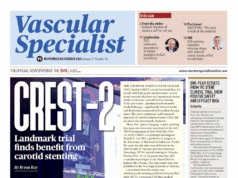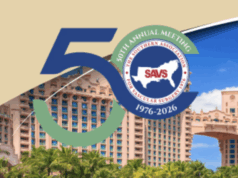In the dream I had an asymptomatic 5.7-cm juxtarenal abdominal aortic aneurysm. Like most of my patients I also had a 70% left internal carotid stenosis and nondisabling right leg claudication due to a superficial femoral artery stenosis. Having stood at the operating table for most of my life, my varicose veins were ugly but fortunately did not hurt.
In this dream I decided to first visit my family physician. He insisted that I stop smoking, but I had already quit 30 years ago. He was unaware of this as he had not updated his new electronic medical record system. He said “Jim, you have to take a statin. I would like to treat you with Crestor but your insurance carrier won’t pay for it. Try some red rice yeast.” I forgave him for not knowing that my name was Russell. After all, he was seeing 150 patients that day just to make ends meet and seemed rushed.
Unhappy with this consultation, I sought out one of the new concierge doctors in town. He gave me professional courtesy and charged me only a retainer of $7,000 a year. He ordered a stress test, CTA, MRI, bone scan, hypercoagulable and lipid blood analysis, and full metabolic profile. A vascular lab tech who came to his office once a week repeated my aortic, venous, carotid, and lower-extremity arterial vascular studies.
The doctor informed me that a radiologist in some other country would be reading the test, but he was sure it would be reliable. When the results came back I now had “Critical 95% carotid stenoses bilaterally,” and my AAA had “inexplicably” grown to 8.5 cm. I also had “limb-threatening severe PAD.” He recommended that I see his favorite cardiologist whom he felt could easily treat all these conditions and my aneurysm. Then, as a favor, he drove me to that appointment in his new Ferrari.
The cardiologist’s eyes gleamed when he saw me. He was an older gentleman wearing a tight-fitting all-in-one red satin suit and constantly plucked at his pointy beard. He had breath that smelled of sulfur. He seemed distracted by something pointed that appeared to be coming out of the back of his pants. His sharp ears tilted forward as he listened to me. He tried to convince me that no matter how I elected to have my aneurysm treated he should stent my carotid first, followed by an atherectomy and stent to open up my superficial femoral artery to prevent an amputation.
Furthermore, he was quite certain that I would get a DVT if I did not let him laser my great saphenous veins. After he had performed these procedures he would treat my AAA with a percutaneous endograft which he was planning to do in his outpatient cath lab. As this was early in my dream, my subconscious still had some control, and so, wisely, I declined to consent. He told me that “One way or another I will eventually get to take care of you!” I must say I was disconcerted by his words since I had a feeling he implied something entirely different.
Terrified, I sought someone competent to take care of my aneurysm. Clearly, as a practicing vascular surgeon myself, I had a pretty good idea as to who would be best, but I could not decide between the young, hotshot endovascular surgeon or the older vascular surgeon who had performed hundreds of open procedures and also performed many endovascular aneurysm repairs. I decided to visit the young surgeon first. After all, even though I was in a dream, I didn’t want to suffer the pain and recovery of an open procedure. He was confident he could help me by was using a new self-constructed fenestrated graft that he had made from scratch in his research lab at the university. Recently he had presented his series of two patients at Vascular Interventional Advances. Both patients had done “very well.” The first patient was still in the intensive care unit 4 weeks after the implant but he expected she would be off the respirator and dialysis soon. The second patient was thrilled that he was getting back some function in his toes after developing spinal paresis.
The older surgeon was also not reassuring. Although he had done hundreds of open AAAs in the past, with the advent of endovascular therapies, over the last few years he felt compelled to use this new less invasive technology. Furthermore, he was quite sure that virtually every aneurysm in his community had already been treated by a gamut of different specialists. The result was that he was performing only a handful of open aneurysms a year. Like many other surgeons of his era he had become less certain of his open surgical skills. He told me that, whereas when he was younger he would sleep soundly the night before a major complex aortic procedure, he now spent the night worrying. Perhaps it was the bags around his eyes, the drooping shoulders, and the slight tremor in his hands that suggested that he might not be the best surgeon for my aneurysm.
So I went back to the young surgeon and asked him if he could do an open operation. He shrugged his shoulders, and with some chagrin he explained he had done only one in his vascular residency. This was not only because there were so few aneurysms treated open, but because his OR time was reduced as a result of a mandate that residents could not work more than 40 hours a week and had to have at least 8 hours of sleep every night.
On the other hand, he had won the “Top Gun” competition at the Society for Clinical Vascular Surgery where he had successfully completed an aortic aneurysm surgery on a plastic mannequin. However, now in his first 3 years in practice he employed only endovascular techniques. He assured me, though, that he would read a textbook before the operation. Walking out of his office I noticed a framed picture in which he was surrounded by his beaming mother and grandmother as he was delivering the valedictorian speech at his grade school graduation.
The sheets were drenched with perspiration, and I cried out in my sleep, waking my wife.
“Who is going to be able to fix my aneurysm?” I said, waking myself.
“Calm down,” she said. “It’s only a dream.”
But was it? Are we training enough young surgeons in open surgery to maintain the surgical skills necessary to safely perform complex aneurysm surgery? Are our older surgeons maintaining proficiency as more and more procedures are performed percutaneously? Are the inroads from other specialties reducing overall aneurysm experience? Is the improvement in medical management slowing aneurysm growth and prevalence? Time will tell, but I believe training programs should be developing shared opportunities where programs strong in open procedures exchange their fellows with programs incorporating high-volume endovascular approaches. Further, older surgeons may need to refresh their skills in both open and endovascular procedures. Otherwise we may have to concede that Centers of Excellence may be the only way that patients can receive optimal care.













